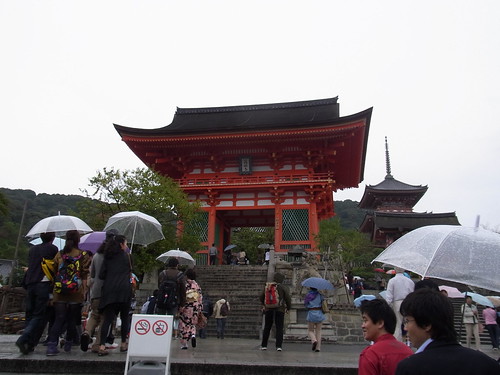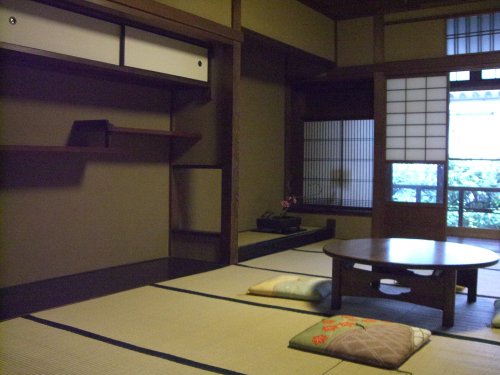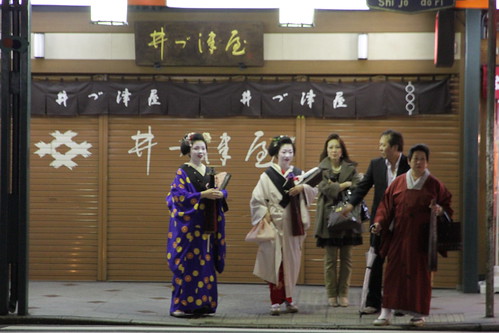
Photography by goto_
The glimpse of a geisha walking down the street swift steps Hanami-koji is a scene not to be missed when visiting Kyoto, the mysterious ancient empire’s capital Edo (1603-1867). Refuge and stronghold of authentic Japanese tradition, they say it’s one of those cities you must travel at least once in life, like Rome, London or Paris. It seems, however, with the first impression one gets to get off the shinkansen in the futuristic train station in Kyoto, built in steel and metal, and watch the huge concrete walls of cold and gray, which, however hidden behind them all ancient magic and mystery of a city that, no doubt, after a few hours strolling through neighborhoods full of history and tradition, ends up becoming a must for knowing the true taste of Japan.

Photography by Carles Tomás Martí
About 2,000 Buddhist temples and Shinto:
Flanked by nearly 2,000 Buddhist temples and Shinto, among them some of great beauty as Kinkaku-ji (Golden Temple, reminiscent of the Golden Temple of Amritsar in India), Ginkaku-ji Temple (Silver), Kiyomizu-dera Fushimi Inari or (outside the city, but a must). Their customs and people suggest that we still have a long way to go West to learn good manners and good work of the Japanese.

Photography by hyamaoka
The art of contemplation:
Perhaps one of the most important ways is, in the bustle of the century and a lifestyle that only looks forward and never backwards, the art of contemplation. The Japanese can spend hours sitting in front of a Zen garden composed only of gray sandstone and a few rocks in the middle, as if sand from the beach they were wonderful world of print. Moss, who care for and grow as your most precious treasure, which usually prefer the grass to decorate their elaborate and exquisite gardens that seem straight out of any decorating magazine. In Japan, it has its greatest exponent in Ryoan-ji Temple in Kyoto, whose exquisite Zen garden is the ultimate representation of this kind is preserved in Asian countries.
The cobbled streets of Kyoto, its geishas and tea houses:
Kyoto, unlike Tokyo, is built horizontally, so that its length (though not as much as 2 million inhabitants) is much broader and costs almost twice as long to scroll through their neighborhoods. His venerable traditional buildings, known as machiya, mark its charming streets, surrounded by ancient temples and green spaces and wooded hills. Kyoto is better than any other city in ancient Japan, where teahouses, geisha and ancient traditions still hold a special place in the fascinating rhythm of their day to day.

Photography by DubsarPR
Kyoto is one of those cities in Japan that are very typical of customs and which must take account of its beautiful temples made of various heights, another thing to consider is the climate of peace that is felt in place.
Bon Voyage!
Leave a Reply
You must be logged in to post a comment.
Recent Comments